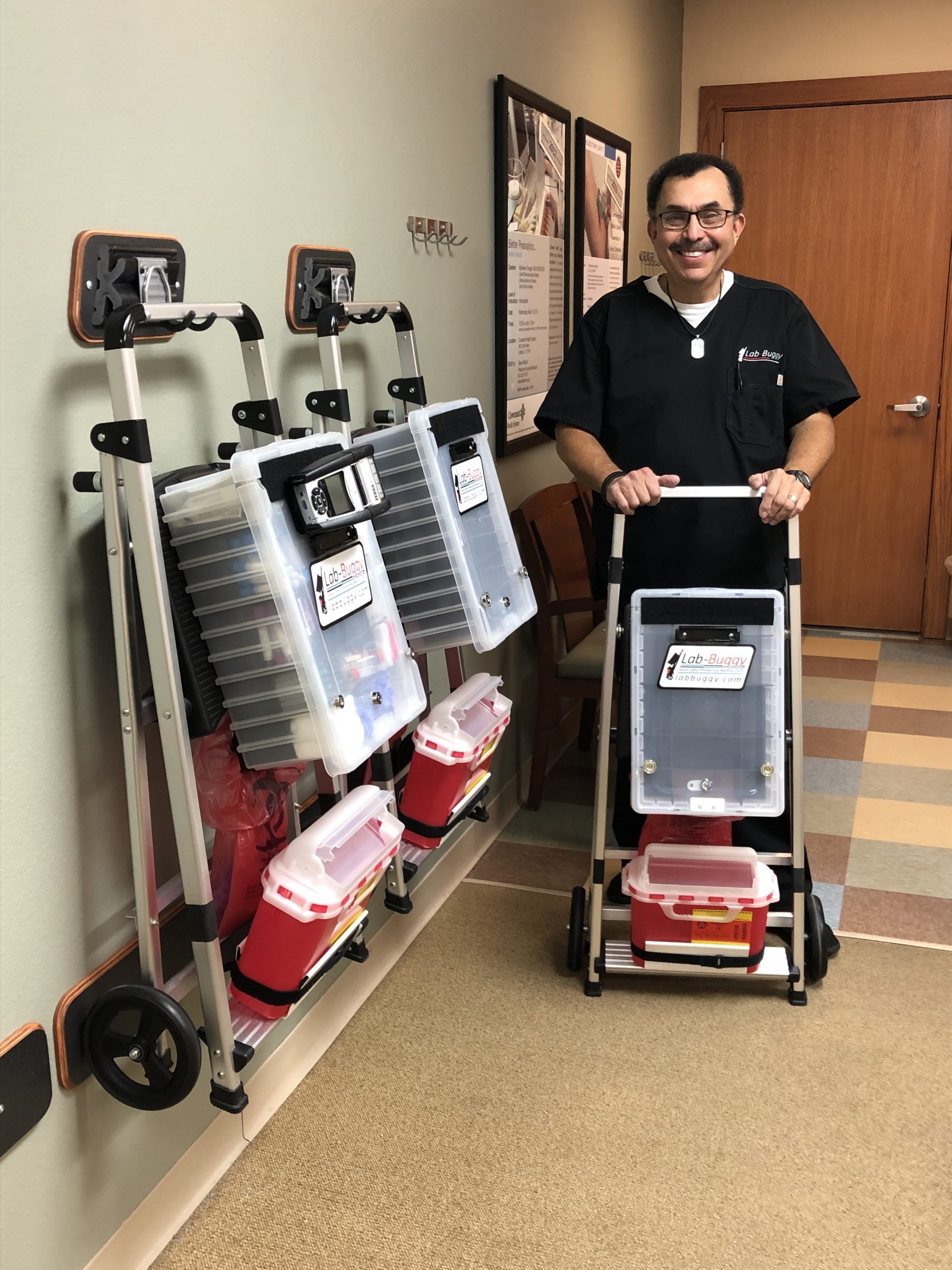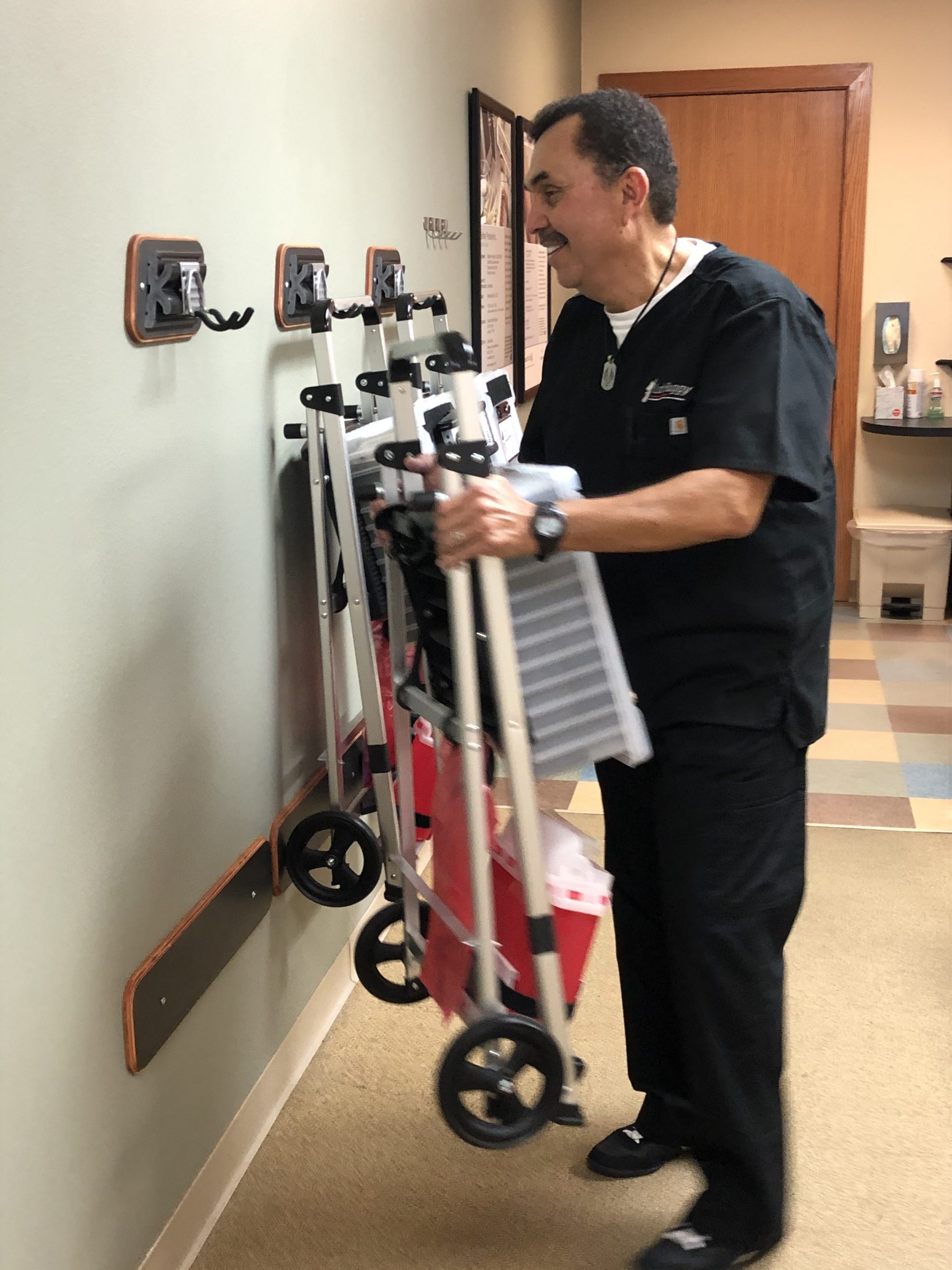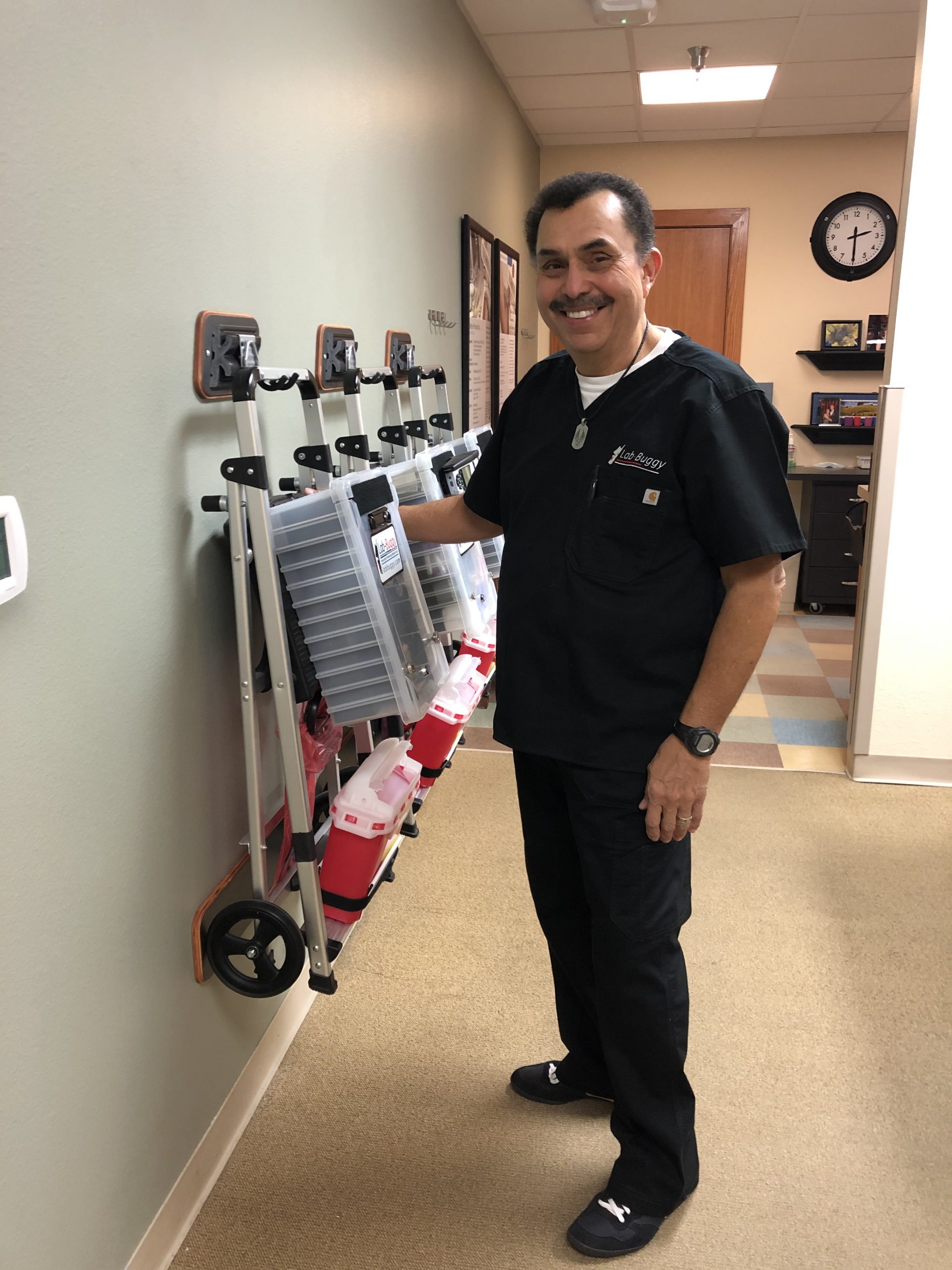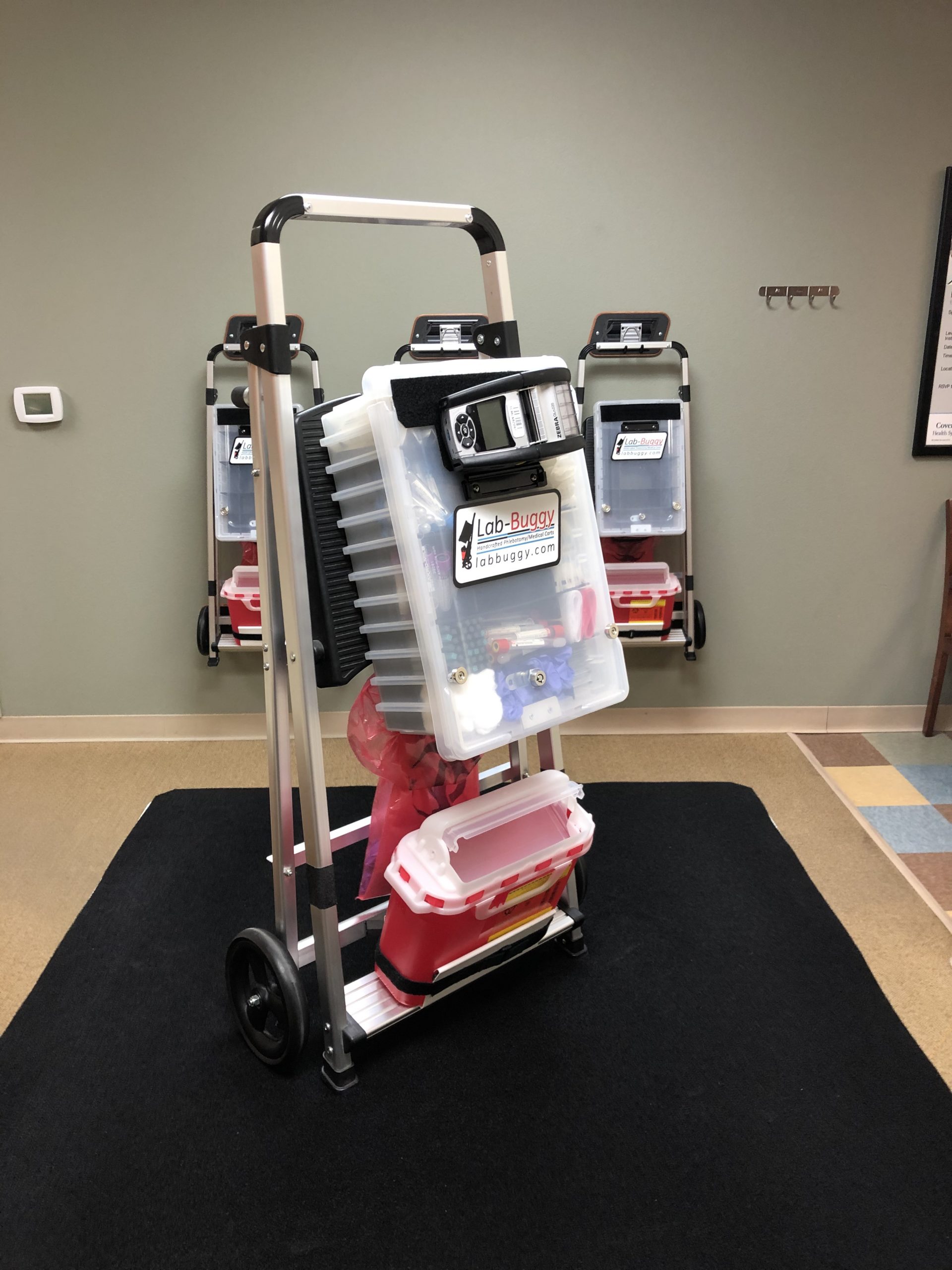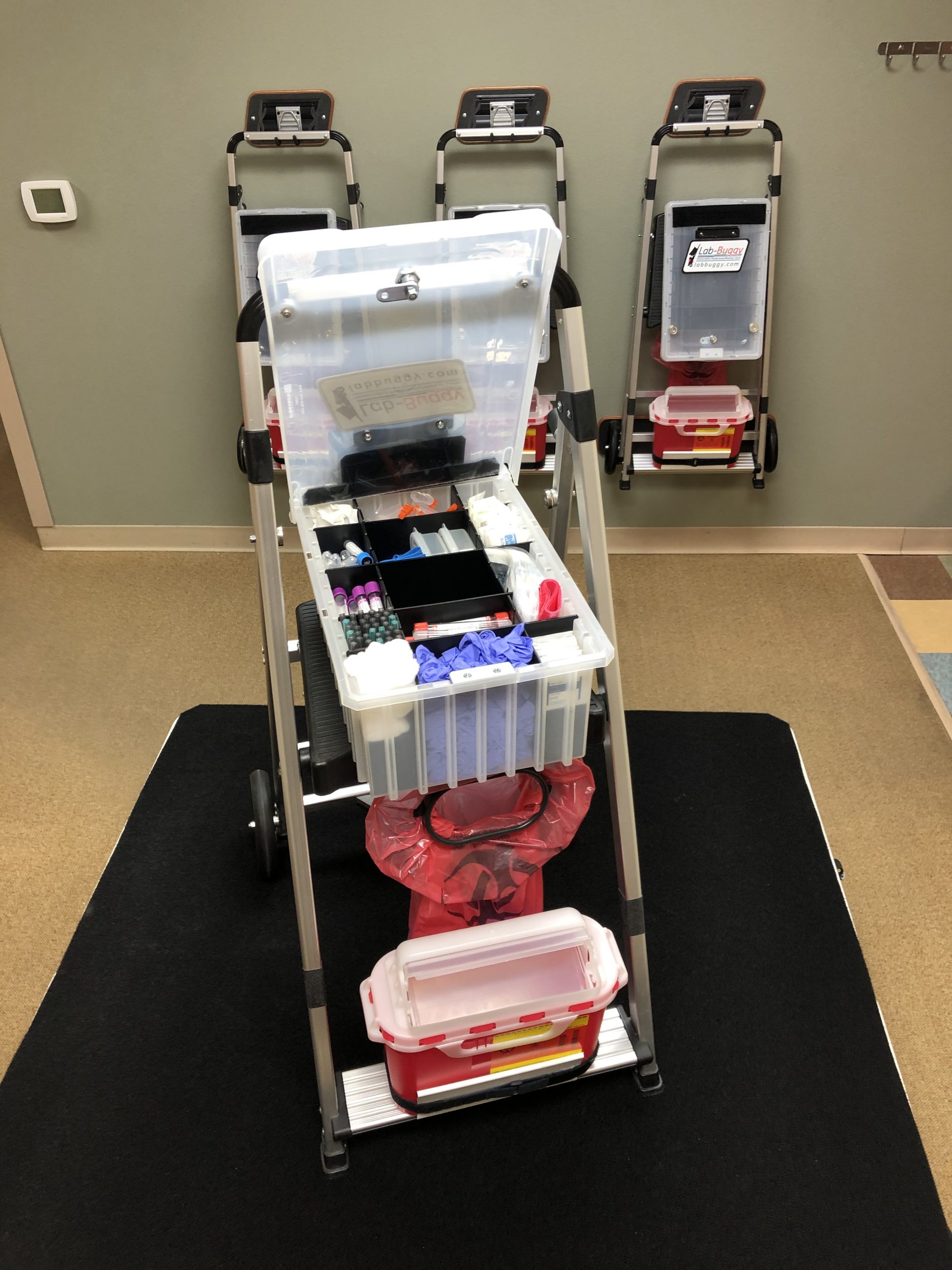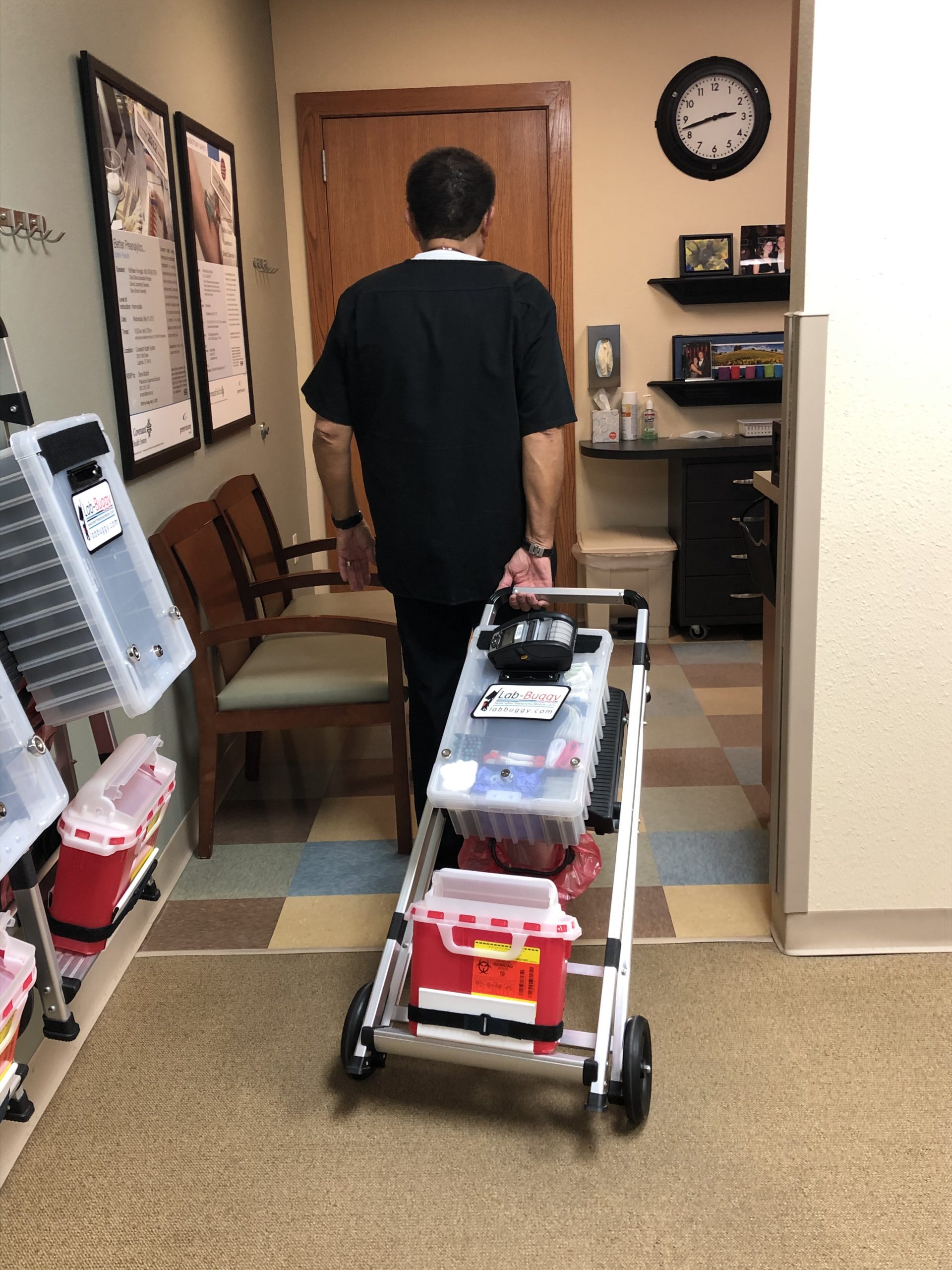Thanks for taking the time to visit Labbuggy.com and Steve’s Lab Oratory. My reason for writing today is to share with You how I came to create my Patent Approved, Handcrafted Phlebotomy / Medical Cart—
Lab-Buggy.

When I started as a Phlebotomist in 1983, we used aluminum Phlebotomy Trays. They were bulky, and heavy compared to trays made of plastic today. I remember many of the Ladies that worked in my department, draped one arm over the long handle and they propped the tray on top of one hip as they carried them. Guys just carried them like a toolbox.
I remember the trays were made of etched aluminum and their handles were made of a long tube of aluminum that mounted permanently down the sides of the trays. Phlebotomists on the team used colored tape to decorate the handles for those trays. If you can imagine a table full of trays with an array of blue, green, red, white and yellow handles on them. Some of the Phleebs I worked with used combinations of those varied colors and came up with their own personal designs. The trays had stickers all over them as well. I’m talking stickers of not just Phlebotomy or Medical related stuff, but with stickers for anything we could find. I even remember, one of those stickers was an STP oil Sticker. STP oil is an oil additive that helps your car or truck run better. I was born in 1958 and STP Oil Stickers were a part of my growing up. STP stands for “Scientifically Proven Petroleum”. I just found that out today –because I looked it up. I remember seeing those stickers on bumpers, front doors, toolboxes, anywhere you felt you needed one, just part of graduating from high school in 1976. I remember, one of our young, and dumb Phlebotomists, just like me—put one of those stickers on his tray. I told him our Manager was going to make him take it off… She finally noticed it one day and he exhibited a considerable amount of difficulty and grumbling getting it off. I didn’t tell her. His fault…

I remember those trays had aluminum dividers and racks in them as well. Mostly an array of little open aluminum boxes to hold what you needed for your rounds. I even remember we used cotton balls that came in a huge box. We had to pull those cotton balls out of the box, put them into one of those little aluminum open boxes and then douse them with alcohol that came out of plastic bottles. You had to feel into the cotton and decide if they were wet enough before you made your patient rounds. We used those aluminum trays for years, until plastic trays finally started coming around and became the standard. So much lighter and so much more professional looking. I remember as a Supervisor, I let my Phleebs put stickers on those plastic trays for a while, but eventually, I stopped letting them put stickers on them at all, because they just did not convey the professionalism I wanted our patients to feel from us when we walked into their rooms.

Have you ever had a patient’s perception of your tray feel something like this? A bunch of tools and supplies thrown in the tray with disarray and no regard for organization? Over the years I have seen trays trashed to no end. It was an important issue I tried to instill in the mindset of my team over the years. I tried to get them to think of what kind of confidence their trays would instill for better or worse in the minds of their patients. If someone is collecting my blood, I want their tray to convey, impeccable, streamlined organization. I would build every one of my new Phleebs, a tray from scratch when it was time to turn them loose and let them fly alone. I used my own tray as an example because I knew they had no clue yet for what they did and did not need and how to organize those new trays. If they decided to modify them, that was their call. They always started out nice, but after just a few days I would see many of those trays metamorphosize into another version of chaos and disarray.
Around1995 the Lab Industry addressed this problem and started designing and building an array of Phlebotomy carts. Better—but they still did not address the problem like I felt it could be done. Phlebotomy carts out there on the market today have a very similar design. They start out with a central column that is perched on top of an array of splayed out wheels like the bottom of an IV Pole. The Central Column sometimes has drawers and accessories mounted and is usually topped with a table that in many cases carries a standard type of Phlebotomy Tray. A Tray that can still morph into chaos and disarray. Some of these carts weigh over 100 lbs. These common kinds of Carts have to be pushed from patient to patient. They tend to jostle from side to side and they tend to veer left and right as you push them.
The defining moment that put me on the journey to find a better way, happened at around 0300. I was performing large early morning runs for AM Draws, in the most challenging Nursing Home we had on contract. Two patients in every small, cramped room. Difficult to collect patients, on vents and in fetal positions in many of those rooms. Many of those patients had brain injuries. Rooms so cramped and crowded I had difficulty even finding a place to put my tray down. Rooms with no sharps boxes available. Rooms with no easy to access trash cans available. Well, on two different occasions at around 0300, in this same facility, my tray went crashing to the floor, and everything on it went flying into every corner of the room. Suffice it to say, I was struggling to keep my act together and trying not to lose it, while I was down on my hands and knees trying to put all of that stuff back into my tray, including patient specimens that I had already collected. On the second time it happened and as I tried to recover from the chaos—I started seriously thinking… THERE HAS TO BE A BETTER WAY… Soon after that second time, I Started my long journey in my Shop. A Part here. A Part there. The Wheels here. The Wheels there. This Box. That Box. After many weeks and what seemed like endless trial and error, I finally had a Prototype I wanted to try out. I took it with me on my next assignment of Early Morning Rounds in the same Nursing Home that had started me on my journey to finding a solution.
As I progressed from patient to patient with the Utility and Ease my Lab-Buggy provided, I became absolutely Giddy with what I had created. I now had a device that had evolved into an ultra-lightweight, impeccably organized workstation on two quiet wheels. It provided a large, covered toolbox for all the tools and supplies I needed—at my fingertips. It carried a convenient bio-hazard trash receptacle. It carried a standard sized, easy to access sharps box. It only weighed 20 lbs or less, fully loaded. It collapsed into its folded position that ergonomically rolled behind me as I made my rounds. It went up and down the steps of the entrance to the facility with ergonomic utility. It was easy to fit into the trunk of my car as I traveled about. My Buggy shaved probably 45 minutes off of my AM Run through that facility that morning.
My Journey to find a solution had been solved. My work had become safer, faster, easier and so much more fun to accomplish. I Promise that if you give my Lab-Buggy a try, the work for your team, will follow suit—which will in turn—Make Everything Better for Your Team, but better yet, my Buggy will make Everything better for the Patients your Team Serves…
I was awarded a Utility Patent by the United States Patent and Trademark Office for my Lab-Buggy in January of 2021…
If You find Yourself searching for Your Path to find A Better Way to do Something … Just Remember…
Lean, Lock and Roll into it … Steven …
